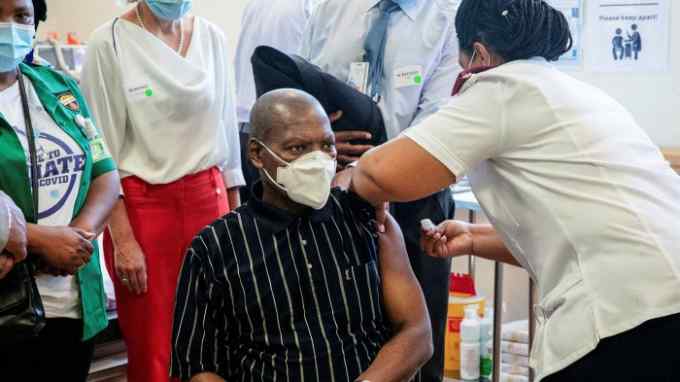Digital technology promises to transform healthcare

Roula Khalaf, Editor of the FT, selects her favourite stories in this weekly newsletter.
From the stethoscope to the CT scanner, technology and healthcare have long gone hand in hand. But the difficulty, especially in an age when budgets are stretched and digital innovations are proliferating, is deciding which technologies will deliver the biggest public health benefits.
These need not be cutting-edge innovations. One important step is simply to replace existing analogue systems with digital ones, says David Maguire, senior analyst in the policy team at health think-tank the King’s Fund.
This year, Maguire co-authored a report that analysed the evidence on digital technology in health and social care. Among the most promising areas it identified was communications, both internally and when dealing with patients.
That assessment is borne out by the success of accuRx, a communications platform for general practitioners that combines a text messaging system, video consultations and the ability to send documents and photos. Today, the software is used by more than 98 per cent of GP practices in England, compared with 50 per cent in March 2020.
While that rapid take-up is due in part to the impetus provided by the coronavirus pandemic, it also reflects goals set by the NHS a year before the pandemic in its Long Term Plan. Drawn up by health experts including frontline staff, it sees “making better use of data and digital technology” as crucial to improving patient care within a decade.
“One of the biggest challenges in the healthcare system is fragmented care, which is felt by patients in almost every health system across the globe,” says Katie Halfhead, head of communications at accuRx. “Simple infrastructure is needed to improve communication between the teams delivering care, which will result in integrated care and better patient outcomes.”
However, organisational inertia can be hard to overcome. As recently as three years ago, Matt Hancock, the then UK health secretary, set deadlines of April 2020 and the end of 2021 for the NHS to phase out use of fax machines and pagers respectively. A mid-2020 National Audit Office report on the NHS’s progress towards “digital transformation” complained of “slow delivery”.
The challenge is not just technological but managerial, Maguire argues. “Providing clinicians and managers in the sector with the skills and the time to engage with implementation processes will help with every project that uses digital technology,” he says.
Patients’ trust is also needed, especially around the use of data — as the NHS found to its cost this year, when a public outcry forced it to backtrack on plans to scrape the medical history of 55m patients into a database to share with third parties.
But not all data is so sensitive. For example, artificial intelligence start-up Kortical has been applying machine learning to logistics data in order to predict demand for different types of blood.
Chief operating officer and co-founder Barbara Johnson says the software is able to account for “the dynamics and uncertainty inherent in such a complex system”, with the result that, in a live trial, it showed it could cut wastage in blood products by 54 per cent.

Drug discovery is another area of promise for machine learning, as start-ups bet that AI can find unsuspected potential in overlooked molecules. Cambridge-based Healx is one such company. Its AI platform, Healnet, is geared towards finding drugs for rare diseases, for which just 5 per cent have an approved treatment. Tim Guilliams, co-founder and chief executive, says the company has 21 programmes in its pipeline.
In the coming months, it is also launching a clinical trial for Fragile X syndrome, which causes learning disabilities.
Healnet integrates content including biomedical research and patient group data and analyses it to find potentially useful relationships between diseases and compounds. The Healx team then selects the most promising compounds for further study.
There is, Guilliams says, the potential for “real advances” in drug development. “I think there are huge opportunities to improve pre-clinical validation and clinical trials — for example, by using AI to enhance molecules to reduce toxicity, or predict the effects of molecules on patients, or even identify the most relevant people to recruit for trials.”
Yet even state of the art technology may depend on humbler innovations. “You can’t start using AI systems, for example, until you’ve moved away from paper records,” Maguire says.
He adds that a conceptual shift from reactive healthcare to sickness prevention may be needed before technology’s full potential can be realised.
“One of the big challenges for the sector is to try to create genuine population models of care that meet people where they are with the need they have now, not a need that develops as their risk factors worsen,” he says.
That could be achieved through the use of wearables that track indicators such as heart rate and body temperature — although policymakers may find the problems of privacy and digital inequality prove harder to solve.

Comments